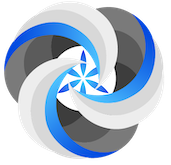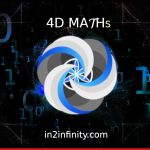Okay. Hi, Colin Power here from in2infinity. Yeah, just had a couple of people with a few questions regarding the number 534. You know, we did something on that in just the last segment. We said 534 divided by six equals 89 double digit digit Fibonacci number. Yes, that’s right. And the last one at that. So, yeah, there is something there about all of that. But there is another way you can see the 534. And maybe this might make more sense to you, in a sort of, if we arrange it in the right kind of way. So let’s imagine we can we’re moving in base 10 Ami, so we’re adding zeros at the each stage. Yeah, so 534 Yep. So we can write 500 And let’s go down to the next line. That’s right. 30. And let’s put four in a line underneath that. Yeah. And what we’re going to do is we’re just going to add a zero on to the end of each one of those, so we’ve got 5340. So we just, you know, times two by 10. In fact, in effect, you know, what you can see is we can move let’s say we were to let’s ignore the zeros. Let’s just say there’s zero space, right? We’re just creating space for stuff to happen. And so let’s say we collapse the file, you see what the number three is, we can move that into the upper column, we get the number 53. Yep, let’s move it back down. In the 40, we could move that up into the third place next to the five and we would get the number 54. Yeah. And so we can we can actually have 53 or 54. There can’t be a choice between the two and it’s a plus or plus or minus one. Yeah. If it is, is a prime number by the way, and 54 that is a function of nine. So essentially Yeah, that’s right. six nines. So, once we get to the idea there that basically that’s that’s how that structure can work. We can find also that the other thing we can do is we can move the four next to the three into the 300 zone and we get the number 34 which is is not a prime number, but it’s to 17th. So it’s quite an interesting number, because 17 is a prime. Yep. And so now let’s have a little think about that in terms of additive numbers. So let’s make a little triangle. Let’s make an upside down triangle. We’re going to put 53 in one corner, and then we’ll have plus one and we’ll put 54 and the other corner. We’re going to put a number 34 At the bottom of the triangle. And what we notice is that five plus three equals eight. Yep, five plus four equals nine, and three plus four equals 798 and seven Yeah, so 789. There is those numbers. Yep. So in infinity, that’s, that’s one of the disruptions of the base 10 function when eight turns to nine and seven rupt and all that business from the number two. Where does it rot from number two? Well, if you look at number 54, we can draw a line down as we draw the line down to the 3040 raise is a minus 20 line and if we go down the other side, we get a minus from 53 to 5034 minus 19. And line 19, again is a prime number one plus nine equals 10. So and two plus zero equals two. So we’ve got a one zero on one side. Once we get to 19 plus two equals 10. We can reduce that back down to one, and the to zero just gets reduced exactly down to two straight away. So that’s just sort of like an I an idea about how the 5534 can work with those prime numbers in that in what we call that special triangle, which is basically based around the numbers, seven, eight and nine. And what it really is showing you is how the end of the base system 789 How it actually functions, and that’s what we need to know if we’re going to get our head around, you know, this infinite number sets and how they transform so that you know seven and twos and all that sort of stuff. It will kind of make sense and we can look at more of that in vortex mathematics. When we start to sort of decode some of the numbers around that number seven, which is the numbers that you see at the bottom there. That creates a lot of confusion in the base 10 system anyway. That’s all for now. Just something on the number 534 And if you’re wondering if where all that stuff comes from, then as you can add the five, the three and the four. And there’s a 345 triangle.
Oh yeah, that’s right, isn’t it? It’s a 345 triangle. That’s right, isn’t it? Yeah. So you can have a look at all that stuff. And just finally also just as a little point, if you remember, the four is actually two squared. That gives us a square root five square root three square root two, but we’ve actually squared the two into a four. That’s another little clue there. But there are lots of lots of stuff happening. In 5340. Yeah, and did you notice Yeah, that’s right. 89 wasn’t it? That was what I’ve 534 divided by six. Oh, look at the top of triangle there. Eight and nine are fantastic. All kind of works out but and the reason it looks like it’s just number coincidence is really because we’re creating the box we’re creating the the base 10 box and that’s why we can do this additive number Function System. And it all kind of loops around in this infinite because that’s what happens when you make a box you know you keep going around in that box. If you work in base infinity, you don’t have those problems, but we can utilise the the limitation of number into different base systems. To our advantage and then see what numbers the provide us and then work with those numbers to create systems of more complexity. Anyway, that’s Colleen power from into infinity. If you want to find out about more about fourth dimensional mathematics, you know, and you’ve got plenty to listen to on these, all this sort of series as well. I’ve always have a website into infinity.com and you can check out some of the stuff there in more detail when you can take your time to read it. Okay, nice one. Thank you very much. Have a great day everybody. And wherever you are, take care and have and we’ll catch up with you next time.


